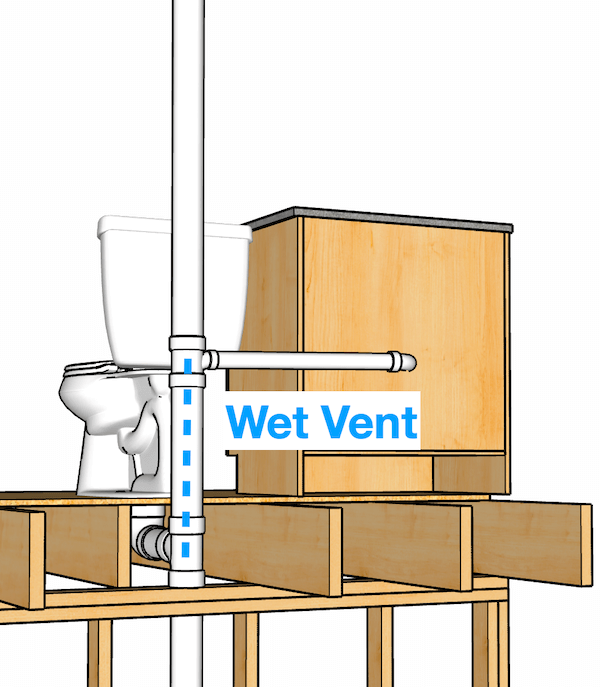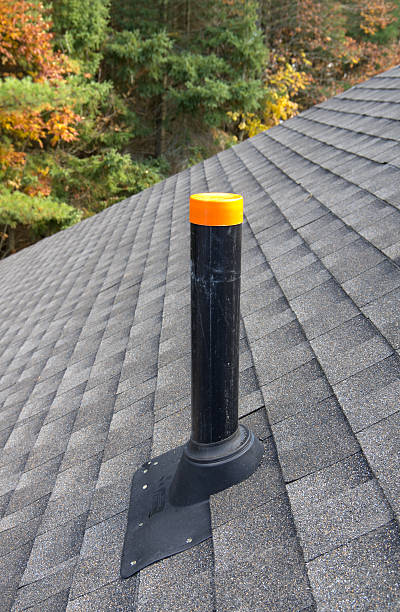Understanding The Importance of Proper Ventilation in Plumbing Systems
Understanding The Importance of Proper Ventilation in Plumbing Systems
Blog Article
This great article further down on the subject of What Is a Plumbing Vent and Why Is It Important is exceedingly entertaining. You should give it a look.

Appropriate air flow in plumbing systems is typically forgotten, yet it is critical for keeping the functionality and safety of your home's plumbing. Ventilation aids manage atmospheric pressure, protect against the accumulation of damaging gases, and make sure the effective elimination of waste. In this overview, we will explore the value of appropriate pipes ventilation, exactly how it functions, and the advantages it brings to your pipes system.
Recognizing Ventilation in Plumbing
Ventilation in plumbing refers to the network of pipelines that allow air to stream with the drainage system. These vents serve numerous functions, consisting of controling atmospheric pressure within the pipes, protecting against drain gases from entering the home, and aiding in the smooth circulation of wastewater.
Just How Air Flow Works in Plumbing Systems
Atmospheric Pressure Guideline
Appropriate air flow keeps balanced atmospheric pressure within the plumbing system. When water moves with pipes, it displaces air. Without ample ventilation, this variation can develop unfavorable stress, bring about slow down drains pipes or siphoning of water from traps, which can trigger undesirable odors to leak into the home.
Stopping Drain Gas Accumulation
One of one of the most critical features of pipes vents is to avoid drain gases, such as methane and hydrogen sulfide, from building up within the home. These gases can position serious wellness threats and are extremely combustible. Vent pipes allow these gases to run away safely outdoors.
Helping in Waste Elimination
Ventilation helps in the efficient elimination of wastewater by stopping airlocks in the drain system. When air can move openly through the vents, it enables water and waste to move efficiently with the pipelines, decreasing the danger of clogs and backups.
Types of Pipes Vents
Key Stack Vent
The major pile air vent, additionally referred to as the vent pile, is the key vent in a plumbing system. It extends from the primary drainpipe line up through the roofing system, enabling gases to run away and fresh air to get in the system.
Branch Vent
Branch vents attach to the primary stack vent and serve specific fixtures, such as sinks, toilets, and showers. These vents make certain that each fixture has appropriate air flow to operate properly.
Air Admission Valve (AAV).
An Air Admittance Valve (AAV) is a one-way valve that enables air to go into the plumbing system without the need for a standard air vent pipeline expanding via the roofing. AAVs are commonly utilized in renovations or areas where setting up a basic vent is impractical.
Indications of Poor Ventilation in Plumbing.
Slow Draining Fixtures.
If your sinks, tubs, or bathrooms are draining pipes gradually, maybe a sign of poor air flow. Insufficient air circulation can produce a vacuum cleaner result, making it challenging for water to drain pipes effectively.
Gurgling Seems.
Gurgling sounds coming from drains pipes are commonly an outcome of air being drawn with water traps as a result of negative pressure in the pipes. This is a clear sign of insufficient ventilation.
Undesirable Smells.
Sewer odors inside your home are a red flag that your pipes system is not effectively ventilated. This can mean that sewage system gases are not being adequately aired vent outside, bring about possibly harmful problems.
Common Ventilation Errors.
Insufficient Vent Sizing.
Using undersized vent pipelines can bring about bad air flow and stress imbalances in the system. It's vital to make use of vents that fulfill the particular needs of your plumbing system.
Improper Vent Placement.
Positioning vents too much from the fixtures they offer can minimize their effectiveness. Appropriate positioning ensures that air can flow freely and effectively through the system.
Disregarding Code Demands.
Building regulations offer specific guidelines for plumbing ventilation. Overlooking these codes can result in a system that fails to operate properly and might lead to expensive repair services or health hazards.
Benefits of Proper Air Flow.
Improved System Performance.
Properly aerated plumbing systems run much more successfully, with fewer obstructions, faster draining pipes, and much less pressure on the pipelines. This efficiency extends the lifespan of the plumbing system.
Improved Air High Quality.
By preventing drain gases from entering your home, proper ventilation adds to much better indoor air high quality, making your living environment healthier and extra comfortable.
Stopping Water Damage.
Ample air flow assists prevent water from being siphoned out of catches, which can bring about sewage system gases entering the home and triggering water damages in time.
Steps to Make Certain Correct Air Flow.
Consulting Plumbing Codes.
Constantly speak with regional plumbing codes when developing or changing your pipes system. These codes give the essential standards for proper venting and ensure your system meets safety and security criteria.
Routine Inspection and Upkeep.
Regular evaluations can aid determine prospective air flow issues prior to they become significant problems. Upkeep tasks, such as cleaning air vent pipelines and looking for obstructions, are essential for keeping the system in good working order.
Professional Setup.
For new installations or significant modifications, it's important to employ a professional plumbing professional. They have the experience to make certain the ventilation system is correctly developed and mounted according to code.
Verdict.
Correct ventilation is an important component of any kind of pipes system, guaranteeing that it works effectively and safely. By comprehending the relevance of ventilation, recognizing the indicators of poor air flow, and taking actions to maintain your system, you can prevent costly concerns and shield your home's air top quality.
Understanding the Role of Your Plumbing Vents in the Drainage System
The plumbing system in your home is more than just the kitchen sink, toilet, and bathroom. Some problems that arise within home plumbing are hard to detect because homeowners may not understand potential causes.
One part of the plumbing system that could cause you endless problems is the venting. The drain lines that run through your home and drain wastewater need proper venting to function properly. Faulty plumbing vents can lead to several problems that require the expertise of a plumber to check them out. Before finding experienced plumbing services, there are a few things to learn about plumbing vents.
Why vents are vital
Vents in the plumbing system lead to an outside area such as the roof or the back. The function of these vents is to keep sewer gases away from the drain pipes. They also establish seals in the drainage pipes that prevent the sucking back of waste gases into the home. Venting in the plumbing system also allows oxygen to get into the drainage system, which is an essential component in the breakdown of waste matter. The vents also ensure that the air pressure within the drainage system remains balanced, facilitating the flow of wastewater.
Possible problems
When the plumbing vents are problematic, one of the consequences is imbalanced water levels in the toilet. If you notice that the levels in the toilet bowl rise and fall all the time, then there may be something wrong with the vents.
Another issue is air bubble formation within the toilet. In most cases like these, the drain pipes are not receiving enough air. Lack of air pressure equalization is what leads to water flow problems. If you come across such issues in your home, make sure you call professional plumbers, such as the ones from Perfection Plumbing & Drain Cleaning Ltd.
Potential causes
Several scenarios can lead to some of the plumbing problems that homeowners suffer because of venting. One such scenario is the use of incorrectly sized vents. Usually, vents are the same size as the drain line to facilitate proper venting. Vents that are too small will lead to some plumbing issues. Another potential cause is fixtures that are not close enough to the vents. In this scenario, air forces itself through the traps of other fixtures, leading to gurgling sounds from toilets and sinks.
Most of these problems also happen with clogged vents. Tree leaves and debris can cause clogging when they make their way down a vent. Unclogging plumbing vents is a service that you can entrust to Saskatoon plumbers. They will know how to snake down vents and remove clogging stuck in fixtures.

Do you like reading about What Is a Plumbing Vent and Why Is It Important? Post a remark directly below. We would be happy to know your responses about this entry. We are looking forward to see you back again later on. Are you aware of another individual who is inquisitive about the topic? Feel free to share it. Thank you for taking the time to read it.
Call Today Report this page